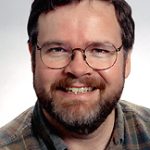Front row: Karl Schmidt (mechanical engineering major from Muskegon, Mich.), Isabella Fasone (general engineering, Delaware, Ohio), Justine Weber (mechanical engineering, Whitmore Lake, Mich.), and Cord Sutter (mechanical engineering, Grant, Mich.) Middle Row: Marissa Shook (computer engineering, Carpenter, Wyo.), Michael Nesburg (computer engineering, Charlevoix, Mich.), Jonathan Courtney (mechanical engineering, Pleasant Lake, Mich.), Alison Hamner (computer engineering, Battle Creek, Mich.), and Erik Schwartz (mechanical engineering, Oshkosh, Wisc.) Back Row: Casey Murphy (mechanical engineering, Dansville, Mich.), Aaron Heath (mechanical engineering, Hanover, Mich.), Mason Whitney (electrical engineering, Quincy, Mich.), Silas Whittington (electrical engineering, Elkton, Md.), Erik Finley, Sault Ste. Marie, Mich., and Wyatt Smrcka (electrical engineering technology, Pinckney, Mich.
When the Engineering Society of Detroit’s Student Chapter members at Lake Superior State University (LSSU) share the motto “Engineering Our Future”, they mean it.
The 24-member chapter lives in the Engineering and Technology House, a Living-Learning Community at LSSU that is located within five row houses revamped to immerse students in their career field and interests. Originally built as officer’s quarters for Fort Brady—a frontier fort established in Sault Sainte Marie to guard against British incursions from Canada—these stately homes are now used to create a supportive community for the students.
Engineering majors are invited and encouraged to participate in the Engineering and Technology House, or Chippewa Hall.
But for the students in Chippewa Hall, it’s more than just having a study partner.
David Roland Finley, PhD, dean of the College of Engineering, says the Engineering House evolved into the Engineering Society of Detroit’s chapter house as the group became more involved in ESD activities. The chapter is about two years old.
“The engineering students were already living in the house, but as they learned more about forming an ESD chapter, it became a clear win-win situation to focus and combine our efforts,” he says.
The house is “hardwired” to support the students’ full experience, Finley says.
“The house is just four houses down from the engineering classrooms, and they have specific computer resources as well as full support from the university,” he explains.
“These are some of the strongest students coming in at the beginning of their engineering education, and living with older students who can provide insight and guidance. It’s a wonderful opportunity for them to learn and understand what engineering is all about.”
Working with the ESD as a student chapter is icing on the cake, he says.
“By combining opportunities, these student can learn, grow and inspire the next generation of engineers through ESD networking programs as well as outreach events in the local schools.”David Roland Finley, PhD, dean of the College of Engineering
The chapter is relatively new, so outreach programs and events are still developing and expanding.
Chapter members Allison Hamner, a computer engineering student, and Cord Sutter, who is studying mechanical engineering (both graduating in May 2018) say the proximity creates “a second family; a tight-knit group of friends” who are available to support each other as they develop their careers.
Hamner says the connection to ESD is opening up numerous opportunities.
“One of the best things we’ve done already is taking a tour of the Mackinac Bridge. We were able to climb to the top, and see and learn how it was designed, and talk with experts in the industry. The lead engineer on the project was a woman who has been in engineering for many years. It was very inspiring to talk with her and learn from her experience,” she says.
A requirement for the Living Learning Community students is to create a house project. For the engineering students, the project is building a 3D printer, which they plan to complete by spring. They are also coordinating events for local middle and high school students such as robotics programs. Last fall, the group met with a local Cub Scout troop for a science activity consisting of building a sound structure using uncooked spaghetti noodles and marshmallows. More such events are in the planning stages.
Chapter advisor and LSSU associate professor of mechanical engineering, Zakaria Mahmud, PhD, says living in the house has huge benefits for the students.
“It’s a space that is immersed in mentoring, learning from peers and networking,” he explains. “And as ESD chapter members, the students have many opportunities to meet individuals and have discussions that can lead to internships, career advice and even job offers down the road.”
But just as essential, he says, the students are able to explore the field and carve out a niche that will be satisfying in the long run.
“The students participate in activities, such as the Mackinac Bridge tour, a tour of the Soo Locks in Sault Ste. Marie, and building a 3D printer. They will also attend the North American Auto Show this year and work with younger students by volunteering at a First Robotics Competition—all of this leading to a fulfilling, comprehensive picture of where they want to go with their careers,” he says.
Looking back on his own academic experience and work at other universities, Mahmud says the ESD-LSSU partnership is unique.
“I have not seen something like this at other universities. Through this partnership the students at the Engineering House are excited to be ESD members,” he says. “The opportunities before them are limitless.”
About the Author
 John Shibley
John ShibleyPhotographer/Staff Writer
Shibley has been a writer, editor, photographer, and videographer in the public relations office since 1991, except for a five-year stint as hobby and planetary science editor at Astronomy magazine in the mid-90s, where he was a finalist for the American Astronomical Society’s Jonathan Eberhart Planetary Sciences Journalism Award.
